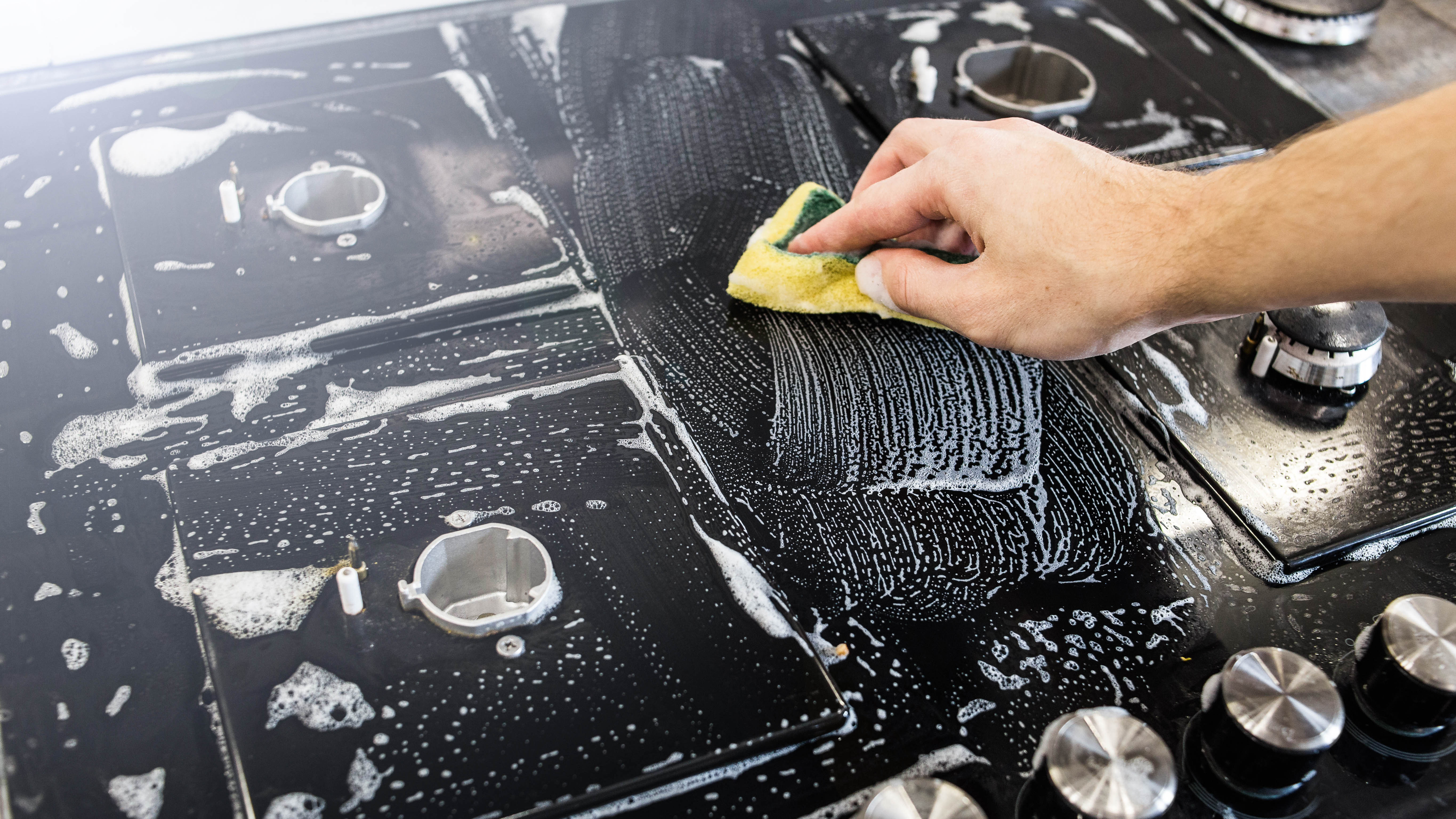This running pace calculator can help you set your goals for races — here’s how to use it
Lining up a PR bid? These charts will show the pace you need to run

There are several different types of running pace calculator, but they all serve the same purpose, which is to help you work out what pace you need to run in events like 5Ks and marathons to hit your goals.
The most simple running pace calculator is a pace chart, which you’ll find below and gives the pace you need to run in min/mile and min/km in order to hit an overall time goal for an event. The next level up is a pace calculator where you give a target time and it automatically works out the pace for you, or vice versa – you suggest a pace and it says what your overall time will be if you stick to it.
More complex still are running pace calculators that will work out the pace you might be able to run for events, based on factors like your age and other race times. These can be useful to get a rough idea of times you could do, but the targets they set shouldn’t be taken as gospel.
Many of the best sports watches will predict your race time as well, to varying degrees of success. As someone who runs and races a lot, I've never found these predicted times perfect, but they can be useful for gauging your training paces.
If you are looking for advice on how to work out your target race time for any distance, then check out the expert advice below. Then below that you’ll find pace charts for 5K, 10K, half marathon and marathon running events so you can see the pace you’ll need to run to hit your target time.
Of course whatever your target time is, you'll need to put in a lot of training to make it happen, and if you're eyeing up a PR then a pair of the best carbon plate running shoes can also help.
How to work out your target time
The biggest question you might have, especially if you’re a new runner, is how you pick a target time. For advice on that I asked running coach David Chalfen, who has been coaching for over 20 years and is currently the Senior Men's A Group Coach at London club Highgate Harriers.
Sign up to get the BEST of Tom's Guide direct to your inbox.
Get instant access to breaking news, the hottest reviews, great deals and helpful tips.
David Chalfen is a running coach with over 20 years experience who focuses on long distance events. Chalfen is Qualified at Level 4 within the UK Athletics coaching system for performance: 10K to the marathon, and at Level 3 in strength and conditioning. Chalfen is currently the Senior Men's A Group Coach at Highgate Harriers running club and has coached hundreds of runners from senior international through club and recreational levels.
Chalfen, whose new book A Few More Laps: A Deep Dive Into The Sharp End of Running and Coaching, shares insights from his 45 years in the sport as an athlete, coach and administrator, gave us advice on how to judge your target time for distances from 5K to the marathon.
"For newer runners with no real benchmark of training level, about four weeks before the event, run 70 to 75% of the target distance as a full effort time trial,” says Chalfen. “With four weeks of further training and the race atmosphere, if sensibly channeled, this time trial pace should be very close to the expected pace for the full race distance.”
I asked Chalfen if this applied to marathoners as well as those training for shorter events, and he said yes, it would fit into a marathon training plan well.
“I'd say it applies for newer/moderately-experienced runners from 5K to half marathon and arguably very similarly to marathoners too, albeit at marathon you'd do better to do it at marathon pace,” says Chalfen. “If a notional 4-hour marathoner runs 19 miles at 4-hour pace four weeks before the event it's a suitably hard and key training effort at the right stage of preparation.”
If you’re looking to work out your 5K pace in particular, Chalfen has a couple of challenging training sessions you can try that can give you an idea of your pace.
“A tough but reliable indicator of your 5K pace could be 10 x 800m with a 60-70 sec standing recovery, says Chalfen. “Or 8 x 1000m with an 80-90 second standing recovery.”
Once you have your 5K pace, you can use that to work out a rough pace for longer distance events — Chaflen warns against being too ambitious in how you scale up your times.
“As you double the race distance from 5K to 10K to half marathon to full marathon, a well-prepared runner slows by about 6% to no more than 7% with each doubling of the race distance,” says Chalfen. “Any tighter conversion is unusual or just unrealistic.
If you’re lining up a marathon then shorter races can be a good indicator of your goal, and Chalfen has provided some rough guidelines for 10K and half marathon times that indicate you might be able to run popular marathon goals from sub-3 to sub-4.
“Below are some rules of thumb for a range of the most often used marathon targets, based on 10k and half marathon comparators, and assume all factors regarding course, weather, and terrain are equal and that the runner is at the same level of aerobic fitness across the distances.”
That last point is important — think about how fit you were when you ran a shorter race, if you’ve gained or lost fitness, then your marathon time might not line up with that shorter event time,
“For example, a runner who runs 90 minutes for a half marathon in November, improves significantly over a 10-month spell without another race, then does a September marathon, would likely be fitter than a 3:15 potential,” says Chalfen.
“Around the ‘classic’ marathon goals one can broadly extrapolate between the numbers:
| 10k time | Half marathon time | Marathon time |
| 38 mins or just over | 1:24 | 2:59 |
| 40 mins | 1:30 | 3:15 |
| 42 mins | 1:36-7 | 3:30 |
| 48/49 mins | 1:51 | 3:59 |
If you use a running pace chart or calculator that aims to predict your race time using other race times, you can get a goal to aim for, but Chalfen warns that these charts are sometimes based on shaky foundations.
“A big caveat in many of the pace charts is that they seem to assume that much newer and slower runners have developed their VO2 max, their anaerobic threshold and their running economy to the same relative levels as high performers,” says Chalfen.
“This is rarely the case as VO2 max, which is perhaps the key influencer of 5k performance, typically reaches its trainable plateau years before a runner has optimized their running economy, which is the critical indicator at marathon. Hence many charts extrapolate highly flattering marathon times from 5K performance.”
Running Pace Charts
Once you have a set time in mind, these pace charts will show you the pace you need to run to hit it. If you have a more exact goal that isn’t covered here, a pace calculator might work instead.
5K Pace Chart
| Finish time | Min per-mile pace | Min per-km pace |
| 45min | 14:29 | 9:00 |
| 40min | 12:52 | 8:00 |
| 35min | 11:16 | 7:00 |
| 30min | 9:39 | 6:00 |
| 25min | 8:03 | 5:00 |
| 20min | 6:26 | 4:00 |
| 17min | 5:28 | 3:24 |
| 15min | 4:50 | 3:00 |
10K Pace Chart
| Finish time | Min per-mile pace | Min per-km pace |
| 1hr 20min | 12:52 | 8:00 |
| 1hr 10min | 11:16 | 7:00 |
| 60min | 9:39 | 6:00 |
| 55min | 8:51 | 5:30 |
| 50min | 8:03 | 5:00 |
| 45min | 7:15 | 4:30 |
| 40min | 6:26 | 4:00 |
| 35min | 5:38 | 3:30 |
Half Marathon Pace Chart
| Finish time | Min per-mile pace | Min per-km pace |
| 3hr | 13:44 | 8:32 |
| 2hr 45min | 12:35 | 7:49 |
| 2hr 30min | 11:27 | 7:07 |
| 2hr 15min | 10:18 | 6:24 |
| 2hr | 9:09 | 5:41 |
| 1hr 55min | 8:46 | 5:27 |
| 1hr 50min | 8:23 | 5:13 |
| 1hr 45min | 8:01 | 4:59 |
| 1hr 40min | 7:38 | 4:45 |
| 1hr 35min | 7:15 | 4:30 |
| 1hr 30min | 6:52 | 4:15 |
| 1hr 25min | 6:29 | 4:02 |
| 1hr 20min | 6:06 | 3:47 |
| 1hr 15min | 5:43 | 3:33 |
| 1hr 10min | 5:20 | 3:19 |
Marathon Pace Chart
| Finish time | Min per-mile pace | Min per-km pace |
| 7hr | 16:01 | 9:57 |
| 6hr 30min | 14:52 | 9:14 |
| 6hr | 13:44 | 8:32 |
| 5hr 30min | 12:35 | 7:49 |
| 5hr 15min | 12:01 | 7:28 |
| 5hr | 11:27 | 7:07 |
| 4hr 45min | 10:52 | 6:45 |
| 4hr 30min | 10:18 | 6:24 |
| 4hr 15min | 9:44 | 6:03 |
| 4hr | 9:09 | 5:41 |
| 3hr 45min | 8:35 | 5:20 |
| 3hr 30min | 8:01 | 4:59 |
| 3hr 15min | 7:26 | 4:37 |
| 3hr | 6:52 | 4:15 |
| 2hr 45min | 6:18 | 3:55 |
| 2hr 30min | 5:43 | 3:33 |
More from Tom's Guide

Nick Harris-Fry is an experienced health and fitness journalist, writing professionally since 2012. He spent nine years working on the Coach magazine and website before moving to the fitness team at Tom’s Guide in 2024. Nick is a keen runner and also the founder of YouTube channel The Run Testers, which specialises in reviewing running shoes, watches, headphones and other gear.
Nick ran his first marathon in 2016 after six weeks of training for a magazine feature and subsequently became obsessed with the sport. He now has PBs of 2hr 27min for the marathon and 15min 30sec for 5K, and has run 13 marathons in total, as well as a 50-mile ultramarathon. Nick is also a qualified Run Leader in the UK.
Nick is an established expert in the health and fitness area and along with writing for many publications, including Live Science, Expert Reviews, Wareable, Coach and Get Sweat Go, he has been quoted on The Guardian and The Independent.
